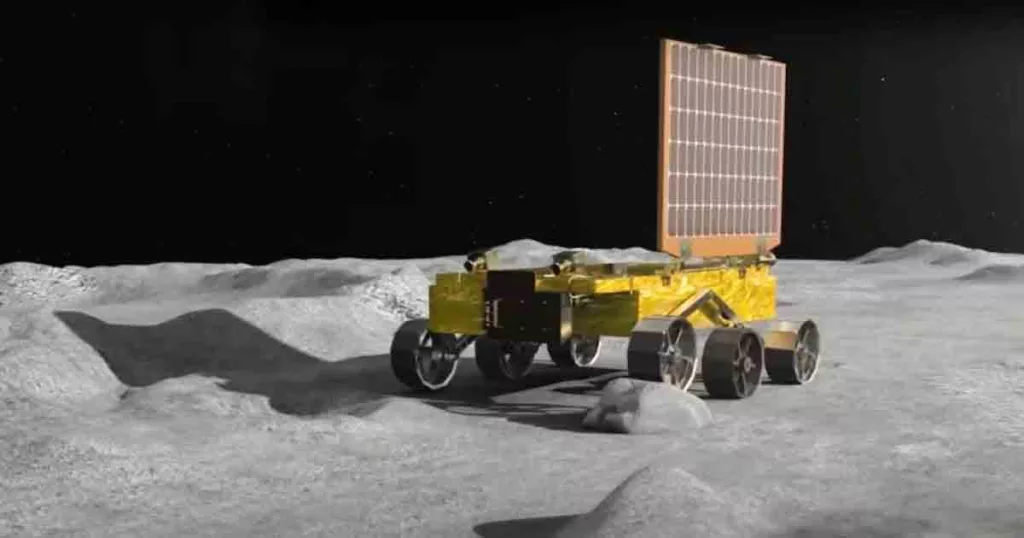Chandrayaan 3 : Pragyan Rover Discovers Sulphur in Lunar South Polar Region and Hunts For Presence Of Hydrogen

PUNE: Chandrayaan-3’s Pragyan rover has detected sulphur in the Moon’s south pole area, as confirmed by ISRO on Tuesday. The rover’s Alpha Particle X-ray Spectrometer (APXS) was used to make this discovery.
As per the information provided, Sulphur is not commonly found on the Moon, making its presence in the south pole region significant. It suggests the possible existence of water ice, which is believed to be trapped in the permanently shadowed craters of this area.
ISRO posted on X that the Laser-Induced Breakdown Spectroscope (LIBS) instrument onboard the Rover has definitively identified the presence of sulphur, as well as other elements like aluminum, calcium, iron, chromium, titanium, manganese, silicon, and oxygen. The search for hydrogen is still ongoing.
The LIBS instrument onboard Chandrayaan-3 Rover conducted the first-ever in-situ measurements of the lunar surface’s elemental composition near the south pole. These measurements provide concrete evidence of the presence of sulphur in the region, which was not previously possible with the instruments on the orbiters.
LIBS is a scientific method that uses intense laser pulses to analyze material composition. By focusing a high-energy laser pulse onto a material’s surface, such as a rock or soil, a hot and localized plasma is created. This plasma light is then detected and analyzed to determine the elemental composition of the material.
Initial graphical representations of the data have revealed the presence of aluminum, sulphur, calcium, iron, chromium, and titanium on the lunar surface. Further measurements have also identified the presence of manganese, silicon, and oxygen. Ongoing investigations are being conducted to determine the presence of hydrogen.










